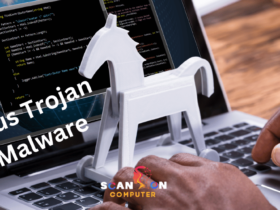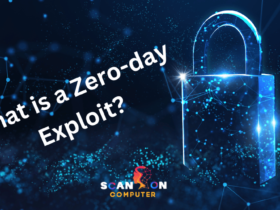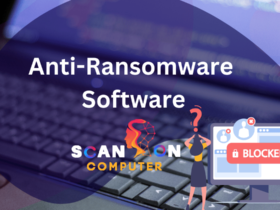Imagine a cyberattack so stealthy it quietly infiltrates your network, studies your defenses, and extracts critical data—sometimes for months before you even notice. This is what defines an Advanced Persistent Threat (APT). These intrusions represent one of the most sophisticated dangers in modern cybersecurity, specifically targeting government agencies, enterprises, and critical infrastructure.
Unlike ordinary malware or viruses, APTs are strategically planned and executed by highly skilled threat actors—often state-sponsored groups—seeking espionage, intellectual property theft, or system compromise over long durations.
Understanding Advanced Persistent Threats
An Advanced Persistent Threat is a coordinated, covert cyberattack campaign. The term “advanced” highlights the attackers’ skill in leveraging complex techniques such as zero-day vulnerabilities or multi-stage infiltration methods. “Persistent” refers to their long-term access focus, usually with ongoing control and monitoring of the victim’s environment.
APTs are not about quick profit but long-term intelligence gathering or sabotage. They often use multiple attack vectors—social engineering, malicious email attachments, and compromised websites—to gain initial access.
Common secondary keywords include “cyber threat intelligence,” “state-sponsored hackers,” and “persistent malware.” Using them enhances topical relevance and visibility.
Stages of an Advanced Persistent Threat Attack
APT attacks are methodical and well-planned. They progress through distinct stages, often compared to military operations:
Stage 1: Initial Intrusion
Attackers infiltrate the network using spear phishing emails or exploiting unpatched vulnerabilities. Access is usually stealthy, using legitimate credentials.
Stage 2: Establish Foothold
Once inside, they install backdoors, trojans, or remote access tools (RATs) to maintain control and avoid detection.
Stage 3: Lateral Movement
The attackers expand their reach within the network, escalating privileges, and compromising additional systems.
Stage 4: Data Exfiltration and Persistence
The final objective is data theft or surveillance. Sensitive information—like trade secrets or national intelligence—is exfiltrated.
Common Techniques Used in APT Attacks
APT attackers blend traditional and innovative methods to bypass defenses:
-
Spear Phishing: Customized phishing campaigns designed to deceive specific targets.
-
Zero-day Exploits: Attacks on software vulnerabilities unknown to vendors.
-
Supply Chain Attacks: Compromising third-party vendors to infiltrate target systems.
-
Malware and Rootkits: Hidden software granting remote control and persistence.
These methods enable stealthy infiltration that bypasses antivirus and firewalls.
Real-World Examples of Advanced Persistent Threat Groups
The cybersecurity landscape has seen numerous APT groups:
-
APT1 (China): Linked to cyberespionage against U.S. industries.
-
APT28 (Russia): Associated with government-backed operations targeting NATO and election infrastructures.
-
Lazarus Group (North Korea): Known for major attacks like the Sony Pictures breach.
Each of these groups demonstrates how coordinated teams use APTs as tools for statecraft.
How to Detect an Advanced Persistent Threat?
Traditional antivirus tools are insufficient for APT detection. Instead, organizations use:
-
Behavioral Analytics: Identifying unusual patterns within network traffic.
-
Endpoint Detection and Response (EDR): Provides real-time monitoring of endpoints.
-
Network Detection and Response (NDR): Analyzes traffic flow for anomalies.
-
Threat Intelligence Platforms: Correlate signals across multiple layers.
An effective detection strategy integrates human expertise with automation through security orchestration tools.
How to Prevent and Mitigate APT Attacks?
APT prevention focuses on multi-layered security rather than single solutions.
-
Defense-in-Depth: Employ multiple security measures—firewalls, IDS/IPS, and micro-segmentation.
-
Vulnerability Management: Patch known flaws promptly.
-
User Education: Conduct regular phishing and awareness training.
-
Zero Trust Architecture: Validate all access requests continuously.
-
Threat Intelligence Sharing: Collaborate with CERTs and ISACs for early warnings.
Business Impacts of Advanced Persistent Threats
The repercussions of APTs are severe:
-
Financial Loss: Operational downtime and ransom payments.
-
Data Breach: Theft of customer records and trade secrets.
-
Reputation Damage: Reduced customer trust and market value.
-
Regulatory Consequences: Non-compliance with data protection laws.
APT recovery is resource-intensive, often requiring months of remediation.
The Role of Threat Intelligence in Defending Against APTs
Threat intelligence provides actionable information on known threat actors, their tactics, and associated indicators of compromise (IOCs).
Companies deploy cyber threat intelligence systems to identify adversaries before an attack occurs. These systems help security teams recognize suspicious domains, IP addresses, and behavioral patterns tied to specific APT groups.
APT vs. Traditional Cyberattacks
| Factor | APT | Traditional Attack |
|---|---|---|
| Objective | Long-term espionage or disruption | Immediate gain or sabotage |
| Skill Level | Highly skilled, state-sponsored | Varies widely |
| Detection Time | Months to years | Hours to days |
| Techniques | Multi-stage, stealthy, adaptive | Often one-step and noisy |
Best Practices to Stay Protected
-
Implement Zero Trust Security: Assume breach and verify everything.
-
Adopt Managed Detection and Response (MDR): Outsourced 24/7 monitoring ensures faster detection.
-
Conduct Penetration Testing: Simulate attacks to uncover vulnerabilities.
-
Ensure Backup Integrity: Secure vital data using offline or immutable backups.
-
Run Security Drills: Test team readiness through tabletop exercises.
Future Trends in APT Threat Landscape
As digital infrastructure evolves, so do attackers.
-
AI-Powered Attacks: Automated, adaptive malware using machine learning.
-
Cyber Warfare Expansion: Increased state-sponsored espionage efforts.
-
Cloud Targeting: APTs exploiting misconfigured cloud environments.
-
Quantum Threat Preparation: Building defenses for post-quantum cryptography.
Organizations must anticipate these trends to stay resilient.
Conclusion
Advanced Persistent Threats are not just sophisticated—they’re strategic. Their long-term persistence makes them especially difficult to counter. The key lies in proactive cyber threat intelligence, continuous monitoring, and comprehensive defense-in-depth.
To safeguard your enterprise, invest in robust security operations, educate personnel, and integrate adaptive defenses that evolve as quickly as modern attackers.
Stay vigilant, stay prepared, and outsmart the threat before it strikes.
Frequently Asked Questions (FAQs)
1. What is an example of an Advanced Persistent Threat?
APT28, also known as “Fancy Bear,” is a Russian group known for campaigns targeting NATO and election systems.
2. How do I know if my organization is a victim of an APT?
Look for unusual data transfers, slow systems, or abnormal outbound communications. Use endpoint detection tools to confirm.
3. What tools help in detecting APTs?
Solutions like EDR, SIEM, NDR, and threat intelligence platforms are essential in identifying APT signatures.
4. How long can an APT remain undetected?
APTs can persist for months or even years before discovery, depending on monitoring capabilities.
5. What sectors are most targeted by APT groups?
Government, defense, healthcare, finance, and critical infrastructure sectors are prime targets.
6. Are APTs preventable?
While they can’t be completely eliminated, advanced monitoring, patching, and Zero Trust frameworks drastically reduce risk.
7. What is the difference between APT and ransomware?
Ransomware pursues immediate financial gain, while APTs aim for long-term espionage or control.












Leave a Reply
View Comments